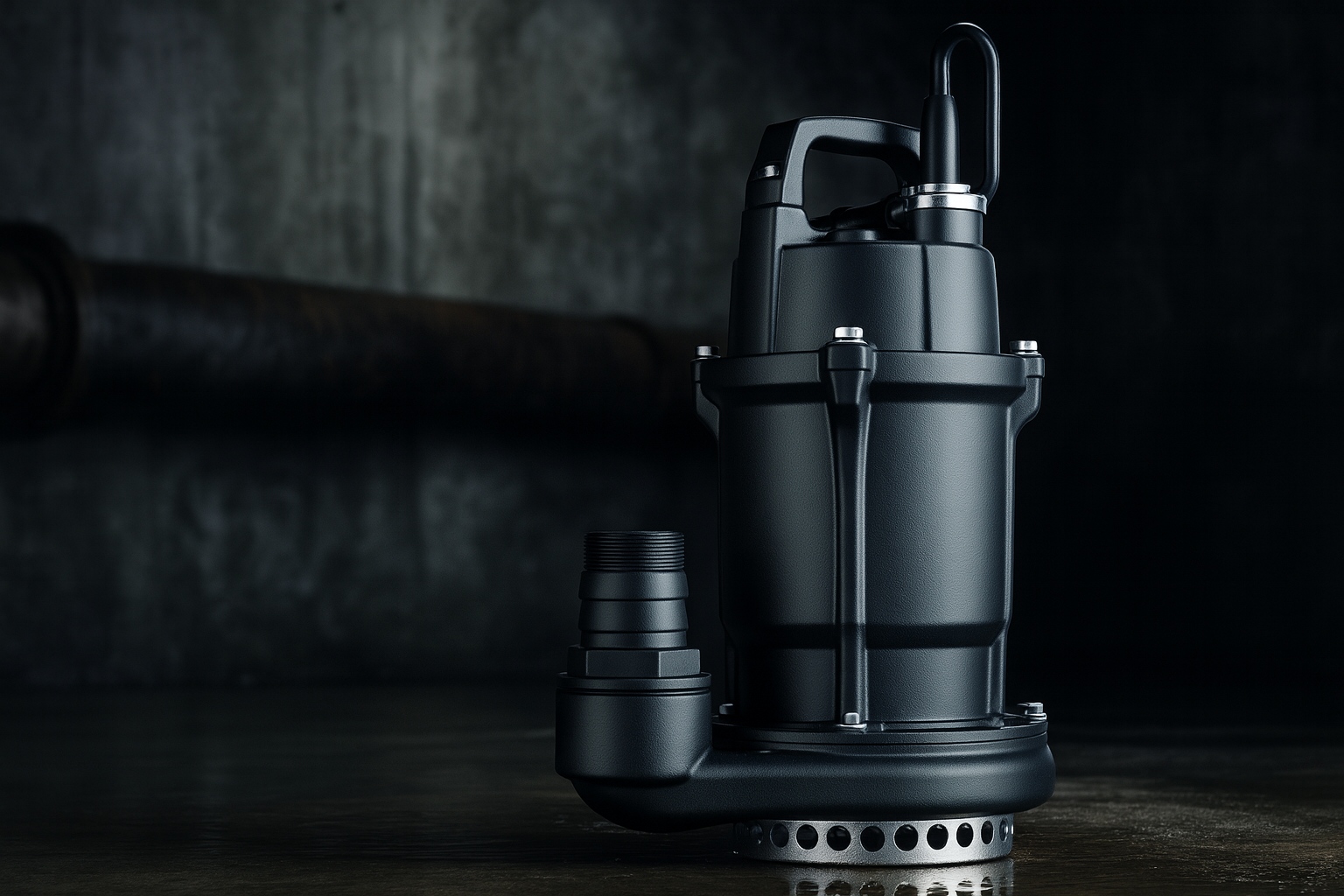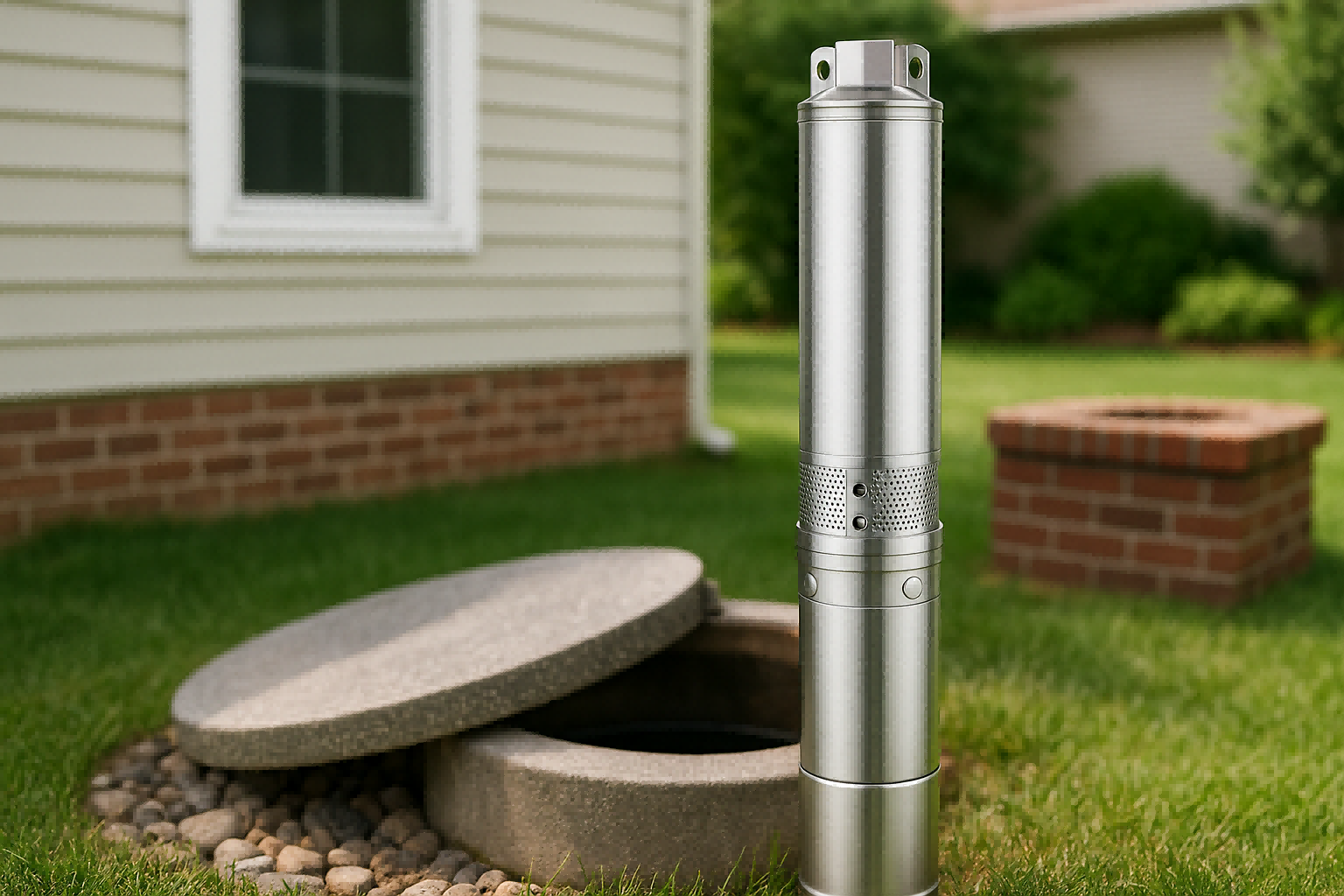Tired of weak showers and trickling faucets?
Frustrating water flow can ruin your daily routine.
A modern booster pump is the engineered solution for reliable, high-pressure water delivery throughout your property.
A booster pump is a specialized device designed to increase, or "boost," the pressure of water flowing through your plumbing system.
When the pressure from your municipal supply or well is too low to meet your needs, a booster pump provides the necessary force to deliver consistent, strong water flow to every outlet.

Understanding if a booster pump is the right solution begins with understanding your specific pressure problem.
You might notice pressure drops when multiple taps are open, or upper floors of your building might have noticeably weaker flow.
These are classic signs that your system's existing pressure is insufficient.
Before investing in a pump, it's wise to rule out other culprits like hidden leaks or clogged pipes.
However, if the core issue is simply a lack of force from the source, a booster pump is the definitive answer to transform your water system's performance.
Let's explore what these devices are and how they solve these common issues.
What Exactly Is a Booster Pump?
Do you struggle with weak water flow that makes simple tasks like showering or washing dishes a chore?
This lack of pressure can be a constant source of frustration.
A booster pump is an electromechanical device that increases low water pressure within a plumbing system, ensuring a strong and steady flow to all fixtures.
A booster pump is a device that increases the pressure and flow rate of a fluid, in this case, water.
It doesn't create water but rather takes existing flow from a source like a municipal line or a storage tank and gives it an extra push.
Think of it as a helper that ensures water can travel uphill, through long pipe runs, and to multiple outlets simultaneously without a drop in performance.
The Core Components and Function
A booster pump is a system of parts working in harmony.
At its heart is a motor that drives one or more impellers.
An impeller is a rotor with blades that spins rapidly, transferring velocity to the water that enters the pump.
This high-velocity water then moves into the pump's casing, known as the volute, which is specially shaped to convert this velocity into high-pressure energy.
The entire process is managed by a control system.
Simple pumps might use a basic pressure switch, but modern systems use sophisticated electronics to monitor pressure and demand in real-time.
This ensures the pump only runs when needed and at the precise speed required, delivering consistent pressure without wasting energy.
Booster Pump vs. Other Pump Types
It is important to distinguish booster pumps from other types of pumps.
| Pump Type | Primary Function | Typical Use Case |
|---|---|---|
| Booster Pump | Increases pressure in an existing line. | Homes with low city pressure, multi-story buildings. |
| Submersible Well Pump | Lifts water from deep underground. | Drawing water from a private well. |
| Circulator Pump | Moves water in a closed loop. | Hot water heating systems (hydronics), solar heating. |
| Sump Pump | Removes unwanted water accumulation. | Basements, crawlspaces. |
A booster pump is designed to solve a pressure problem, not a water source problem.
It works in-line with your existing plumbing, taking the pressure you have and elevating it to the pressure you need.
This focused function makes it an essential appliance for a wide range of applications where water pressure is paramount.
How Do Modern Booster Pumps Achieve Constant Pressure?
Are you tired of your shower turning into a trickle the moment someone flushes a toilet?
This fluctuation is a common problem with older or inadequate water systems.
Modern booster pumps use Variable Frequency Drive (VFD) technology.
This allows the pump's motor to adjust its speed in real-time based on water demand, maintaining perfectly constant pressure no matter how many taps are open.
The magic behind today's best booster pumps lies in their intelligent technology.
They've evolved from simple on/off devices into sophisticated systems that provide unparalleled control, efficiency, and reliability.
By combining advanced motors with smart electronics, they deliver a user experience that was previously impossible.
These pumps don't just solve low pressure; they perfect it.
This approach not only guarantees user comfort but also protects your plumbing and appliances from the stress of sudden pressure changes.
Let's dive deeper into the specific technologies that make this possible.
The Heart of the System: VFD and Advanced Motors
The core of a modern system is the synergy between its motor and controller.
Variable Frequency Drive (VFD) Technology: This is the brain of the pump.
A VFD controller precisely adjusts the electrical frequency supplied to the motor.
By doing this, it changes the motor's speed (RPM).
When you open a tap, a pressure sensor detects the drop, and the VFD instantly speeds up the motor to maintain the set pressure.
When you close the tap, it slows down or stops.
This creates a seamless, constant pressure experience.
Advanced Motor Technology: Many high-end pumps now use Permanent Magnet Synchronous Motors (PMSM).
These motors are far more efficient and quieter than traditional asynchronous motors.
The use of powerful permanent magnets instead of wire windings in the rotor reduces energy loss, generates less heat, and allows for very precise speed control, contributing to a nearly silent operation—often under 50dB.
This soft start and stop function is a critical feature.
It ramps the motor speed up and down gradually, eliminating the violent "jolt" of traditional pumps.
This reduces mechanical stress on the pump's internal components and prevents a damaging hydraulic shockwave, known as water hammer, from traveling through your pipes.
Built for a Long Life: Superior Materials and Cooling
A pump's longevity is determined by the quality of its components.
Engineers focus on both mechanical durability and heat management.
Premium Mechanical Components: Look for pumps built with high-grade materials.
- Impellers: AISI 304 stainless steel or high-quality brass impellers are the gold standard. They resist corrosion and wear, ensuring the pump maintains its performance over years of service.
- Bearings: Top-tier pumps use precision bearings from reputable manufacturers. These high-quality bearings operate more quietly, with greater precision, and have a significantly longer lifespan than standard parts.
- Housing: A robust housing, often made from cast iron or engineered polymers with UV-resistant coatings, protects the pump from the elements and physical impact.
Advanced Thermal Management: Heat is the enemy of electronics and motors.
Superior pumps incorporate advanced cooling designs.
This often involves an optimized fan and housing structure that increases airflow by 15% or more.
Efficient heat dissipation can improve motor cooling efficiency by over 80%, directly contributing to a longer, more reliable operational life.
Where Are Booster Pumps Used?
Is low water pressure only a problem for old houses on a hill?
Many assume this, but pressure issues affect a vast range of modern properties.
Booster pumps are essential solutions in residential, commercial, industrial, and agricultural settings.
They solve pressure challenges in everything from high-rise apartment buildings and hotels to manufacturing plants and large-scale irrigation systems, ensuring operational efficiency and user satisfaction.
The need for adequate water pressure is universal.
Any system that relies on water to function can suffer when the natural pressure is insufficient.
A restaurant needs to run dishwashers and fill pots quickly.
A farm needs to irrigate its fields evenly.
A hospital must have reliable water flow on every floor at all times.
In each scenario, inconsistent or weak pressure translates to lost time, inefficiency, or even safety concerns.
This is why booster pumps are not a niche product but a foundational component in modern infrastructure.
Their versatility allows them to be scaled and configured for nearly any application.
Common Booster Pump Applications
The challenges of low water pressure are diverse, and so are the solutions.
Here's how booster pumps are deployed in different environments.
Residential Properties:
This is the most common application.
- Multi-Story Homes: Water pressure from the city main often isn't enough to reach upper floors with adequate force. A booster pump ensures strong showers and fast-filling toilets on every level.
- Homes with Low Municipal Pressure: Even in a single-story house, the incoming pressure might be consistently low, making all fixtures perform poorly.
- Well Water Systems: A well pump brings water to a pressure tank, but a booster pump is often added after the tank to increase pressure for household use, especially in large homes.
Commercial Buildings:
Commercial properties have high and fluctuating water demand.
- Hotels and Apartments: Hundreds of guests or residents may use water simultaneously in the morning. Booster pump systems, often with multiple pumps (a duplex or triplex system), scale their operation to meet this peak demand without anyone noticing a pressure drop.
- Hospitals and Office Towers: Critical applications and the sheer height of these buildings make booster pumps non-negotiable for ensuring stable water service to all floors.
Industrial and Agricultural Systems:
In these settings, pressure equals productivity.
- Manufacturing: Many processes, like cooling systems, high-pressure washing, and certain chemical mixtures, require constant and specific water pressures to function correctly.
- Irrigation: Large farms, golf courses, and greenhouses need booster pumps to push water across vast areas and ensure every sprinkler head emits water with enough force to cover its intended radius.
- Water Treatment: Reverse osmosis (RO) systems, in particular, require high pressure to force water through the fine membranes. Booster pumps are a standard component of these filtration systems.
What Makes a Modern Pump "Intelligent"?
Does a "smart" pump just mean it connects to Wi-Fi?
While remote control is a feature, true intelligence goes much deeper.
A smart booster pump is defined by its comprehensive electronic protection system and its user-friendly, data-rich interface.
It actively safeguards itself from dozens of potential faults, diagnoses its own problems, and provides you with real-time operational data, ensuring maximum reliability and uptime.
The transition from a simple mechanical device to an intelligent one is marked by the pump's ability to self-preserve and communicate.
A basic pump will run until it breaks.
A smart pump, however, constantly monitors its own operating conditions—from voltage and current to temperature and water presence.
This onboard intelligence is designed to prevent failures before they happen.
It protects the user's investment and provides peace of mind that the water supply is protected by a vigilant, automated system.
Advanced Electronic Protection and Control
The brain of a modern booster pump is its printed circuit board (PCB), which runs sophisticated firmware.
This controller is the gateway to all of its intelligent features.
Comprehensive Protection Suite: High-end models feature a suite of protections, sometimes as many as 14 or more, that guard against virtually any scenario.
| Protection Category | Specific Safeguards |
|---|---|
| Electrical Shields | Input Over/Under Voltage, Overcurrent, Stall Protection, Phase Loss. |
| Thermal Shields | Motor Overheating, PCB Overheating, High Water Temperature, Frost Protection. |
| System Shields | Dry Run (Water Shortage), Pipeline Leak Warning, Sensor Failure. |
One of the most critical is Dry Run Protection.
Running without water will quickly destroy a pump.
An intelligent pump uses sensors to detect a water shortage.
Instead of just shutting off, it initiates a smart recovery algorithm.
It may try to re-prime itself, then "sleep" for a period before trying again, repeating this cycle several times over many hours.
This prevents the pump from damaging itself while automatically restoring service as soon as water is available.
Ultra-Reliable Electronics: The pump's environment is often damp and humid, which is lethal for electronics.
To combat this, leading manufacturers completely seal the main controller board in a waterproof potting compound.
This creates a 100% waterproof and dustproof barrier, achieving an IP67 rating for the core electronics.
This single feature can prevent the vast majority of moisture-related failures and extend the controller's life by years.
Intuitive User Interface and Monitoring
Despite its internal complexity, a smart pump should be easy to use.
A well-designed interface provides simple control and powerful insights.
At-a-Glance Status: A combination of buttons and clear LED indicators allows for effortless operation.
- Simple Controls: Usually, pressing UP or DOWN adjusts the target pressure. A power button turns the unit on and off.
- Clear Indicators: LEDs provide instant visual feedback. You can immediately see if the pump is in constant pressure mode, if it has detected a leak, or if there is a fault like a water shortage or voltage issue.
Real-Time Data Access: For advanced users and technicians, the ability to see live operating data is invaluable for diagnostics.
By pressing a button, you can cycle the display to show critical parameters:
- Water Temperature: Monitors the temperature of the fluid being pumped.
- Power Consumption: Shows how much energy the pump is using in real-time (Watts).
- Motor Speed: Displays the exact RPM of the motor.
- Input Voltage: Confirms the stability of your electrical supply.
- PCB Temperature: Shows the temperature of the main controller board.
This transparency demystifies the pump's operation and allows for quick and accurate troubleshooting.
Conclusion
A modern booster pump, especially one with VFD technology, is a powerful and intelligent solution to low water pressure.
It ensures consistent flow, protects itself from damage, and operates with remarkable energy efficiency.
FAQs About Booster Pumps
How do I choose the right size booster pump?
Proper sizing depends on your required flow rate (GPM) and desired pressure increase (PSI).
A professional can perform a system analysis to recommend the perfect pump for your specific needs.
Do booster pumps require a pressure tank?
Many modern VFD pumps can operate without one, but a small tank is highly recommended.
It reduces pump cycling for small water uses (e.g., filling a glass) and absorbs water hammer, extending system life.
Are booster pumps noisy?
Older models could be, but modern VFD pumps with permanent magnet motors are exceptionally quiet.
Many top models operate below 50 decibels, which is quieter than a normal conversation.
Can a booster pump be installed outside?
Yes, many pumps are designed for outdoor installation, but they should be protected from direct rain and sunlight.
An outdoor-rated pump with a UV-resistant housing is ideal.
What is the difference between a single-stage and multi-stage booster pump?
A single-stage pump has one impeller and is suitable for moderate pressure boosts.
A multi-stage pump has multiple impellers in series, allowing it to generate much higher pressures efficiently.
Can a booster pump pull water from a source?
No, a booster pump is designed to boost pressure in a flooded line.
To pull or "suck" water from a tank or shallow well, you need a self-priming pump, some of which also include VFD booster technology.
How much energy does a VFD booster pump save?
Compared to a traditional fixed-speed pump, a VFD pump can save 30-50% or more on electricity.
It saves energy by running the motor only at the speed needed to meet the current demand.








